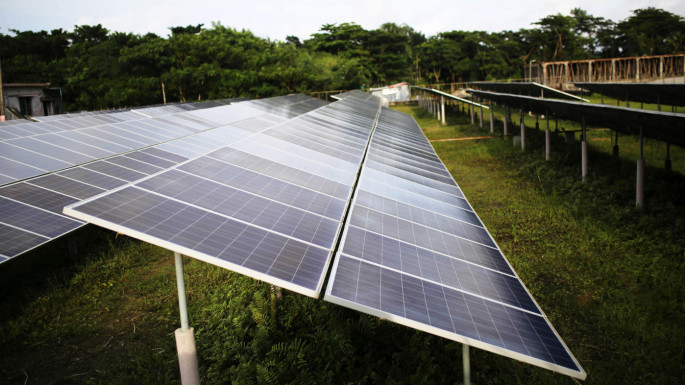
Bangladeshi scientists develop green solar cell
Bangladesh News Desk
Published:21 Apr 2021, 10:11 AM

Bangladeshi scientists develop green solar cell
Bangladeshi scientists have made a breakthrough in developing an environment friendly non-toxic solar cell named copper bismuth oxide (CuBi2O4) absorber based, thin film heterojunction solar cell.
The efficiency level of the novel CuBi2O4 cell is 26%, 4% lower than a conventional solar cell that has toxic elements and is expensive to afford as well.
However, its efficiency is still higher than cadmium telluride and copper indium gallium selenide (CIGS) solar panels that have 22-23% efficiency.
Also, the CuBi2O4 is non-toxic and comparatively cheaper to manufacture than silicon solar cells which are widely used in the market.
"It is a theoretical study. In the near future, we will try to do practical work once the Covid-19 situation normalises," Research Co-author Sheikh Rashel Al Ahmed told the media.
"This is the first research of its kind," he said.
Other researchers are Adnan Hosen of Pabna University of Science and Technology and Md Suruz Mian of Seikei University in Japan.
Sheikh Rashel Al Ahmed, an associate professor at Pabna University of Science and Technology said the newly developed solar cell would be disposable chemically which would not require highly sophisticated equipment.
Existing solar cells and panels are hard to dispose of and have toxic elements like cadmium telluride, and gallium.
The proposed cell, which was described in the study, "Simulating the performance of a highly efficient CuBi2O4-based thin-film solar cell," published in SN Applied Sciences, is still at the academic level.
"We are heading to address some issues including cost and fabrication process. These two areas are contributing factors to the cost of the existing solar panel," he said, adding that the materials for the new panel are abundant locally, and it is a process-based solution.
Researchers said that the CuBi2O4-based thin-film solar cell will reduce the cost as it will not need costly waivers for fabrication.
"Cost of our solar cell will be lesser than the conventional solar panel as our solar light absorber materials are abundant locally," said Sheikh Rashel Al Ahmed.
The fabrication process cost for a normal solar panel is very high. But the CuBi2O4 model will cost less due to the solution method.
Silicon fabrication welfare is needed for the normal silicon solar cell which is expensive for countries like Bangladesh, said the co-researcher.
The thin-film solar cell based on copper bismuth oxide (CuBi2O4), which is a p-type semiconductor, has been recently identified as a photocathode with a two-dimensional porous heterojunction structure.
CuBi2O4 has a high optical absorption coefficient and the advantage of having a narrow energy bandgap, from 1.4 to 1.8 eV, which scientists say, is near the optimum value for solar cell applications.
The researcher found that the cell will have a heterojunction architecture in which the CuBi2O4 material is used as an absorber and n-type cadmium sulfide (CdS) is utilised as a buffer layer. The device also incorporates an aluminum (Al) film, a fluorine-doped tin oxide (SnO2:F or FTO) as a window layer, and a nickel (Ni) layer.
In a PV Magazine report, Sheikh Rashel Al Ahmed said, "The proposed cell design is not tested in a real device but, in the near future, practical production details will come in.
"To achieve pertinent insight into the desirable aspect of such devices in practical applications, the numerical investigation of structural performance, and understanding the physics of solar cells, could be a convenient approach."
According to him, the numerical modelling techniques could be used to forecast the variations in material properties and furnish important suggestions to change designs and parameters.
"Prior to solar cell fabrication, device simulations for thin-film heterojunction solar cells are necessary to understand the operation mechanism," he concluded.